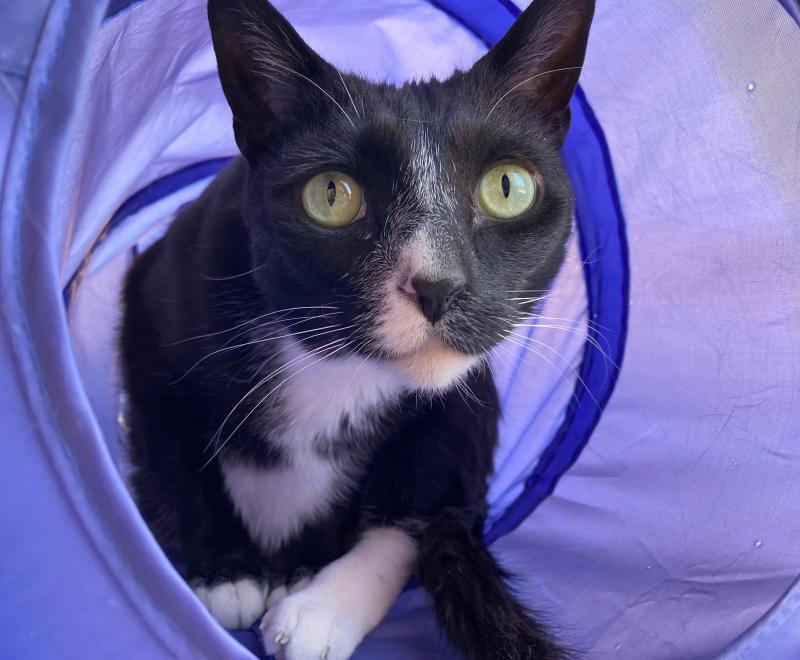‘Hands-off’ cat learns to show his sweet side
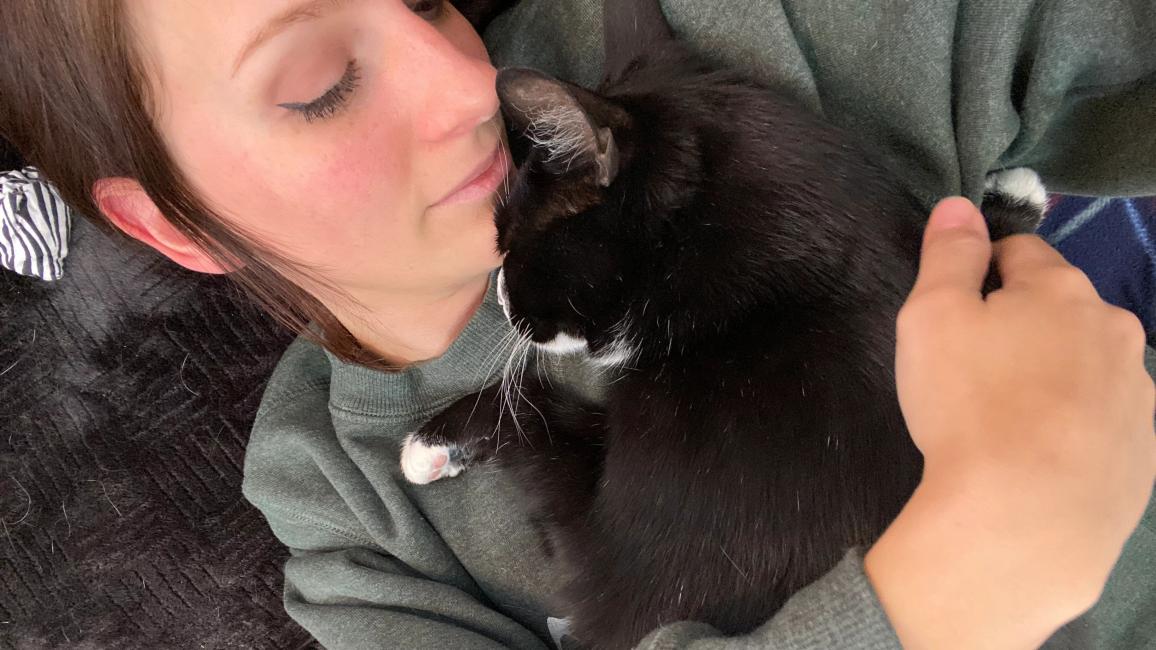
What do a painting in a museum and a bright-eyed tuxedo cat named Hale (pronounced “ha-lay”) have in common? The obvious answer is that they’re both gorgeous and quite fancy. But, until recently, the biggest similarity was a strong “look but don’t touch” policy. And while a painting’s no-touching rule is to protect the art, Hale’s was more about protecting hands and fingers.
At just 2 weeks old, Hale had been found by a family in Hawaii, orphaned and alone. He’d barely opened his eyes, moved in a wobbly belly-crawl, and still very much needed to nurse. He wouldn’t have made it much longer without someone to take care of him. So the family who found him took him in and gathered everything they’d need to raise such a fragile little feline. Hale needed to be bottle-fed every few hours, and he was still too young to quite use the litter box on his own. And he needed to be kept warm and clean. While caring for such a tiny kitten can be tough, the family who’d found him was determined to make sure he grew up into a healthy, happy cat.
As Hale got bigger and stronger, however, he turned out to be a bit of a wild child. He was certainly healthy, but he didn’t quite realize how strong or sharp he was. Typically, kittens learn proper playtime manners from their mom and siblings. Their furry family can communicate when they’re playing too rough in a way that humans — no matter how much we try — often aren’t. And there’s nothing quite as good as another kitten to get all that playful energy out. Single kittens like Hale don’t really get that same socialization or that feeling out of boundaries, and that often spells trouble.
[Socializing and instilling good behaviors in kittens]
For Hale and his found family, his increasingly “naughty” behavior quickly became a source of stress and even fear. He couldn’t be touched without his claws or teeth joining in, he’d circle and swat at ankles, and he only got more wound up as time went on.
When he was 2 years old, Hale landed at Best Friends Animal Sanctuary. He needed space to unwind and help to learn how to express himself in a safer way for all. And pets like Hale — those who need some extra time and one-on-one help before they move into a new home of their own — are just the reason Best Friends made a goal for all shelters to reach no-kill by 2025.
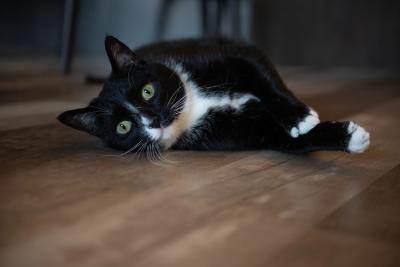
The first paw-step toward petting
For a while, a “Staff Only” sign hung on the door of Hale’s private room at the Sanctuary’s Cat World. (Community living turned out not to be the right fit for the cat who’d grown up as an only kitten.) He was largely given his space while he settled into his new digs, and when caregivers had to enter his room to clean up or bring him meals, they geared up in waders to protect their legs and feet. Hale had become known for anxiously circling legs and nipping at them.
Hale was still getting comfortable in his home-between-homes though, and he was wary of strangers in a place where everyone was one. He needed time to become familiar with the new faces all around him and a whole new routine. So caregivers went slowly and talked gently as they moved around him. They didn’t press him for petting, and the waders meant that even if he did swat, there was no big reaction that might have spooked him or fed the behavior.
But he couldn’t go without being touched forever — especially when he caught the fungal infection ringworm. Not only did Hale need to take a daily pill, but he also needed regular topical treatment. There was no way to avoid handling. Caregiver Bee McCarroll, however, saw the opportunity to dive headfirst into getting him used to a bit more contact.
Treats, it turned out, were the answer. Hale was clever and definitely food-motivated, so using a yummy snack to reward him for allowing himself to be touched worked wonders. Bee also taught him what it meant when someone said “no,” which proved quite useful when letting him know that he was getting a bit too boisterous.
[Cat goes from touch-me-not to grumbly biscuit maker]
Treats, trust, and communication went a long way in reaching a comfortable coexistence between Hale and his human friends. By the time he was cleared of ringworm, Hale was content with the caregivers he knew well coming and going — and maybe even offering quick head scratch now and again.
Hale was far from a cuddly kitty though, and he still didn’t trust strangers — which new caregiver Emily Garcia found out soon after she’d started. The first time she entered his room, Hale circled her legs, reached his neck forward, and nipped at her just like he’d done when he’d first arrived. It was a startling way to start. But, far from being put off, Emily only became determined to help Hale come all the way out of his shell.
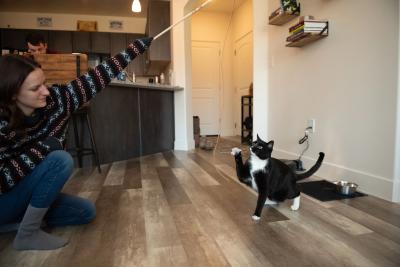
Trading swats for snuggles
From the foundation Bee had built, Emily worked out a new plan and set goals for what she was hoping to help Hale with. She wanted to get him comfortable interacting and being petted without needing the promise of a treat. She also intended to clicker-train Hale with new cues. And, of course, she hoped to get him to a point where people walking around him didn’t have to keep one eye out for his reactions.
Of course, even if one of her goals was letting petting be its own treat, snacks were still a necessary starting point to build that initial bond. Emily began her work with Hale by just quietly standing in his room and offering his favorite treat, Temptations. This was old territory though, and he warmed up to his new treat-bringer easily enough.
Once they’d become familiar with one another, Emily moved on to clicker training. And Hale was a quick study. “It only took a few sessions for him to learn sit and high five,” Emily explains. “These tricks turned out to be a great way to improve his behavior as Hale learned he could start gently pawing to ask for attention, rather than using less calm forms of communication.”
[You (yes, you) are a cat trainer]
Before long, Emily was confident enough in their budding relationship to sit down on Hale’s level and offer pats and scratches without a treat at hand. Hale, for his part, didn’t seem to mind the lack of snack.
And then one day, as she was sitting in his room, Hale walked right up to Emily, flopped down, and rested his head on her lap, purrs erupting from his black-and-white body. It was a huge turning point, and Emily ran with that momentum. She brought in a lawn chair and started spending every lunch hour reclining in Hale’s room. And he started spending every lunch hour cuddling with her, purring as she petted him and pawing softly when she stopped, asking for more attention.
He might have done a bit of drooling, too. Hey, sometimes it happens when you’re finally able to relax like that.
“He craves love and affection just like any cat,” says Emily. “He just struggles with expressing and communicating his intentions, emotions, and needs. Hale requires just a little bit more time and patience to get to know and trust humans in order to let his guard down.” He even started occasionally extending that burgeoning trust to strangers, accepting petting immediately after meeting them.
And when construction meant Hale needed a temporary place to stay, Emily decided to take their friendship up a notch and bring him home to foster.
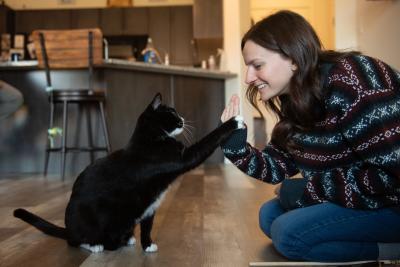
Hale the 'house' cat
“I don’t even think about it anymore when Hale curls up on my chest,” Emily says, as she talks about how Hale’s been settling in at her home. He’s become a bit of a Velcro cat, following her around alongside his feline foster sister and fully embracing the new space.
Hale spends his time snuggling up with Emily, drinking straight from the sink (what an exciting new contraption!), and just generally doing all the things he never really got to enjoy when his energy was so tightly wound. He has human friends, he has a cat friend, and he’s still just getting started.
Hale has come a long, long way — both physically and metaphorically. And while it previously might have seemed that he wanted nothing to do with humans and their homes, it’s becoming pretty clear that now he’s all about that kind of life.
“A home is exactly where he belongs,” says Emily. “After all, it is only fitting for him. His Hawaiian name translates to ‘house.’”
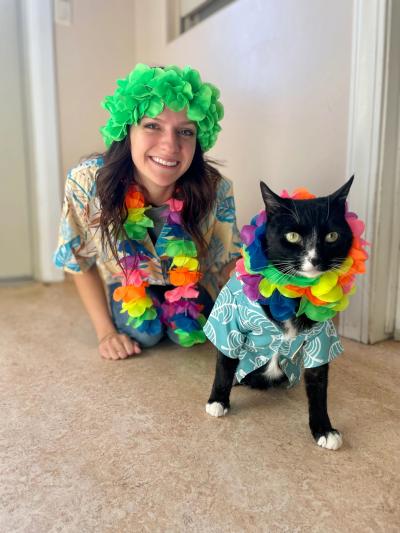
Let's make every shelter and every community no-kill by 2025
Our goal at Best Friends is to support all animal shelters in the U.S. in reaching no-kill by 2025. No-kill means saving every dog and cat in a shelter who can be saved, accounting for community safety and good quality of life for pets.
Shelter staff can’t do it alone. Saving animals in shelters is everyone’s responsibility, and it takes support and participation from the community. No-kill is possible when we work together thoughtfully, honestly, and collaboratively.
